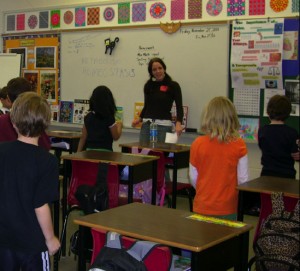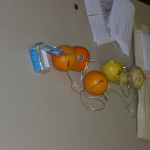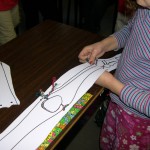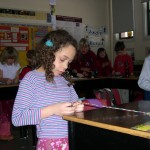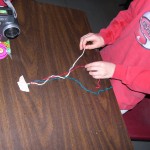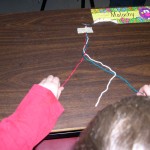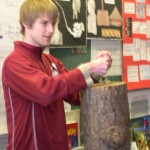Gastrin
October 5, 2011 in Peptide
The Molecules of Life Project (MLP) has its debut with Gastrin.
Friday the 13th of October in Mrs Grant’s second grade class at Oxford Elementary School, the MLP took off with explosive force thanks to the creative talents of Jason Dalziel (B.Sc. DAL) and Stephan Schultz (MFA, NSCAD), aided with some pennies, mentos and diet pepsi. Stephan described clearly the molecule of life, “Gastrin as the traffic cop that controls the flow of acid and mucus into the stomach” as well as “Art as that sweet taste on your fingers after you do something fun like sticking a mento into a diet pepsi”. Jason told how “some acids you eat and some eat you” and the students relayed their own stories of the acidic pain of having orange juice squirt into your eye and the feeling of having eaten many bowls of ice-cream or having drunk many glasses of milk. In the process, the students all learned a little about acid, mucus and the workings of the stomach while having great fun experimenting in groups of two together. With eleven more peptides to go, MLP thanked team Gastrin for a marvelous MLP blast-off at Oxford.


